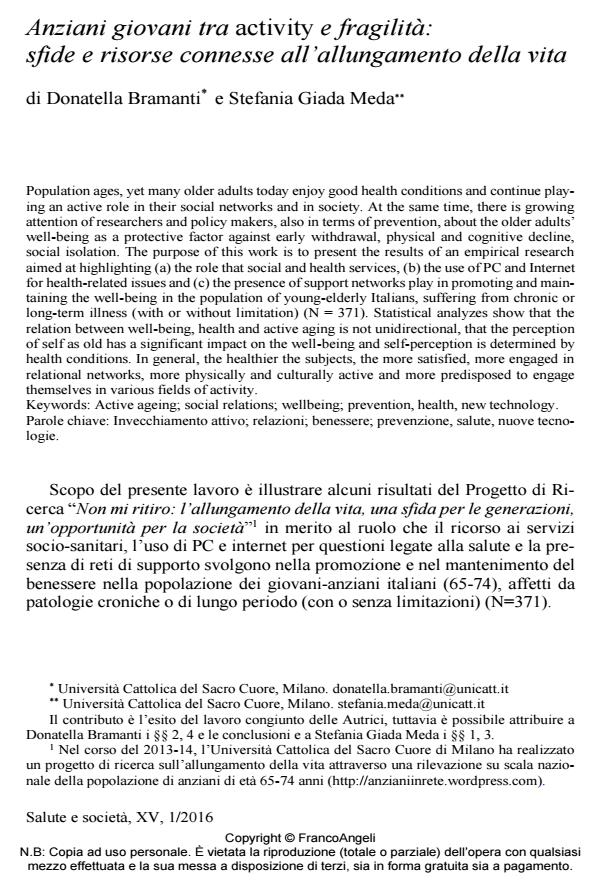Anziani giovani tra activity e fragilità: sfide e risorse connesse all’allungamento della v
Titolo Rivista SALUTE E SOCIETÀ
Autori/Curatori Donatella Bramanti, Stefania Giada Meda
Anno di pubblicazione 2015 Fascicolo 2016/1
Lingua Italiano Numero pagine 19 P. 135-153 Dimensione file 385 KB
DOI 10.3280/SES2016-001010
Il DOI è il codice a barre della proprietà intellettuale: per saperne di più
clicca qui
Qui sotto puoi vedere in anteprima la prima pagina di questo articolo.
Se questo articolo ti interessa, lo puoi acquistare (e scaricare in formato pdf) seguendo le facili indicazioni per acquistare il download credit. Acquista Download Credits per scaricare questo Articolo in formato PDF

FrancoAngeli è membro della Publishers International Linking Association, Inc (PILA)associazione indipendente e non profit per facilitare (attraverso i servizi tecnologici implementati da CrossRef.org) l’accesso degli studiosi ai contenuti digitali nelle pubblicazioni professionali e scientifiche
Population ages, yet many older adults today enjoy good health conditions and continue playing an active role in their social networks and in society. At the same time, there is growing attention of researchers and policy makers, also in terms of prevention, about the older adults’ well-being as a protective factor against early withdrawal, physical and cognitive decline, social isolation. The purpose of this work is to present the results of an empirical research aimed at highlighting (a) the role that social and health services, (b) the use of PC and Internet for health-related issues and (c) the presence of support networks play in promoting and maintaining the well-being in the population of young-elderly Italians, suffering from chronic or long-term illness (with or without limitation) (N = 371). Statistical analyzes show that the relation between well-being, health and active aging is not unidirectional, that the perception of self as old has a significant impact on the well-being and self-perception is determined by health conditions. In general, the healthier the subjects, the more satisfied, more engaged in relational networks, more physically and culturally active and more predisposed to engage themselves in various fields of activity.
Parole chiave:Invecchiamento attivo; relazioni; benessere; prevenzione, salute, nuove tecnologie
Donatella Bramanti, Stefania Giada Meda, Anziani giovani tra activity e fragilità: sfide e risorse connesse all’allungamento della v in "SALUTE E SOCIETÀ" 1/2016, pp 135-153, DOI: 10.3280/SES2016-001010